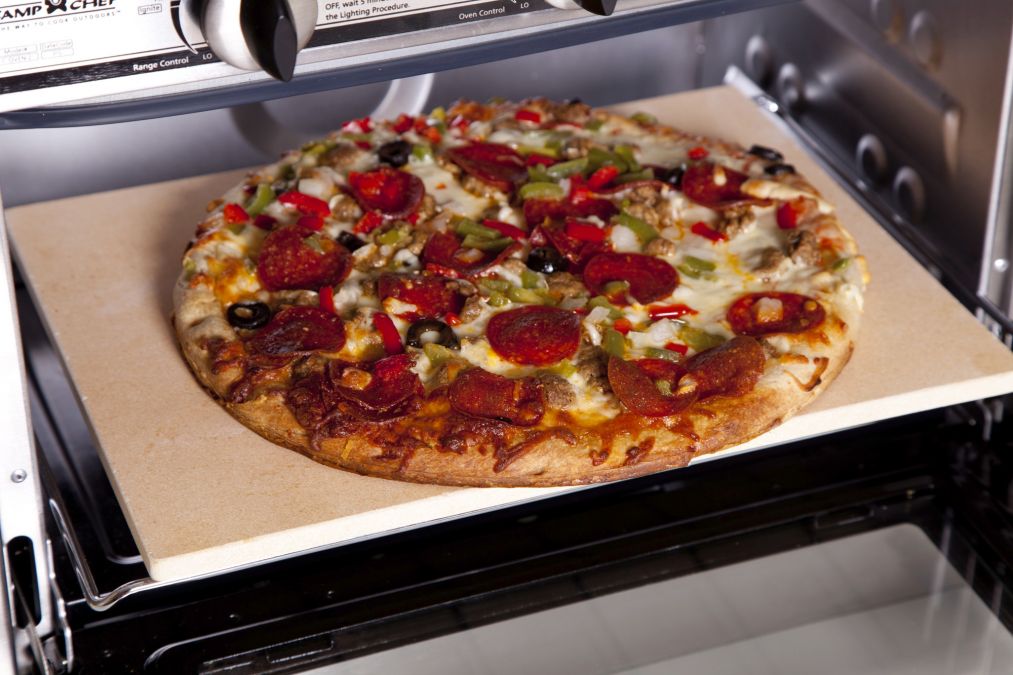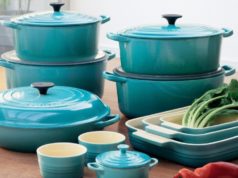A pizza or baking stone has become a vital item in most kitchens as long as tasty pizza goes; mostly because it offers crispier crust results and exactly the same effect as masonry or brick oven. It does this using its permeable feature which usually soaks up moisture and ensures even heating throughout, a process leads to an evenly baked and crispy pizza.
But are you handling your pizza stone with enough care to help them stand the test of time? Caring for a pizza or baking stone may appear straightforward with many new users believing it is unexacting, especially because most people assume they would never have some baked-on bits or residue stuck to it. Well, if you’re one of those, you may be surprised to find a really messy baking stone to clean after baking. Therefore, we bring you useful ways or steps to care for this cookware immediately after each use to ensure it lives up to its lifespan.
What Does a Pizza Stone or a Baking Stone Do?
Pizza stone or baking stone is great for cooking nearly everything you can think of due to their ability to regulate and distribute heat evenly. One thing that makes them a better choice than other types of pizza makers is because of their ability to absorb moisture and cook evenly. They’re not just for baking but can also be used to roast.
What is the Best Way to Clean a Pizza Stone or a Baking Stone?
How do you take care of your pizza stone, you may ask. Well, it is not such a daunting task but maintaining or cleaning your pizza stone can be quite tricky due to its porosity. This is basically due to the fact that it can absorb whatever cleaning agents you are using and possibly affect the supposed yummy taste of your next baking. Hence, we have listed steps that will help you clean your baking stone and make the best use of it.
1. Avoid using detergents or soap when washing your pizza stone. Since a pizza stone usually has minute interstices, it can absorb soap when immersed in it. When soapy water passes through it, this might affect the taste of your next pizza. Of course, you don’t want to ruin your pizza with a soapy taste.
2. When cleaning a pizza stone, it is advisable to avoid soaking it inside water. The reason isn’t far-fetched. Just like with soap, water can permeate into the stone. Rather than submerging in water, allow your stone to fully cool. Then gently scrape off any baked-on food stuck to it using a sturdy, dry brush or plastic scraper. Wipe it down with a damp cloth. This may not get your pizza stone perfectly cleaned because there could be tough food spots or marks. However, using a very wet cloth to clean can ruin your pizza flavor or taste as much as soaking in water or soap could.
3. Cleaning without water may seem not so sensible which is why we advise the use of medium-grit sandpaper to sand down any raised bits when you think your stone is very dirty beyond wiping with a damp cloth.
4. You can leave a pizza stone in the oven on a self-clean mode. The heat will take off as much as 90 percent of baked-on food. Avoid putting in a rack that is susceptible to breakage if exposed to heat. Also, avoid extreme heat and allow the stone to cool down on its own and store up your stone in the oven to create more even heat for baking.
Short guides for the general maintenance and cleaning of a baking stone or pizza stone:
- Allow the stone to cool after cooking
- Remove from the oven
- Using a plastic spatula, scrape off stuck-on food
- Rinse or wipe the stone using a soft cloth and warm water
- Allow the damped stone to dry for 24 hours before using again
- Store. You can store in the oven or on the grill which helps to increase heat retention. Just don’t forget that stone is in the oven when cooking other meals.
Why Do You Need To Clean A Pizza or Baking Stone?
The taste of your pizza depends hugely on two things; the material of your stone and the ingredients you have used in the food preparation. When it comes to the stone material, cordierite is very popular since it can heat evenly and absorb moisture, which is vital for a crispy crust. But no matter the material of your stone, if it is not well maintained, you are bound to end up with a pizza that tastes nothing like what you eat at your favorite pizzeria. So cleaning your pizza stone is important for even cooking of your topping, and a great crust.
How do you prepare a pizza stone for the first time?
Most companies always advice preheating your pizza stone in an oven for an hour before putting a pizza on it. A stone preheated up to 60 minutes delivers a better crust than one not preheated or preheated for less amount of time. After cooking, you can use a pizza peel to take out the pizza from the stone and don’t forget to let the pizza stone cool down inside the oven when you’re done with the cooking.
What Temp Do You Cook Pizza On a Stone?
A pizza stone is usually built out of cordierite, which is great for high heat baking and grilling. The cookware can match an oven’s highest temperature due to their ability to evenly distribute heat. One great reason to choose the cookware when grilling or baking in the oven is that it will help draw off moisture in the food so that your pizza or bread will have a thin and crispy exterior.
See Also: Is Ceramic Cookware Safe? Here are Facts You Must Know
As mentioned earlier, the hotter your pizza stone, the better the browning and expansion of the dough. A preheated stone produces great pizza with a well-brown crust unlike unheated stone or one heated for less than 60 minutes. However, 425 degrees F have proven to be the best temp for a baking stone.
Do You Need to Season A New Pizza or Baking Stone?

There has been a long-held belief that seasoning a pizza stone lends it a non-stick feature. But this is one of the oldest lies ever told. Pizza stones develop a patina through use and this lends it a nonstick feature as it develops. This means that the cookware would naturally get more seasoned the more you cook with it. The result of this natural process is non-stickiness, so you don’t have to rush your stone by applying oil in the name of seasoning.
Consequently, you can use your brand new pizza stone once you pull it out of the package for the first time. All that is required is to wipe it down with a damp cloth and warm water to clean off any factory debris. Allow the moisture to completely evaporate before use and preheat for an hour.
As an option, especially if you really need to speed up the natural process of seasoning, you can use cornmeal, fine polenta, or semolina on top of your stone instead of oil. These don’t end up with a sticky consistency when water touches them.
Alternatively, you can use a parchment paper that is usually safe up to 400 degrees Fahrenheit and nothing more than 450 degrees F. Just make sure that you cut off the edges of the parchment to match the size of the stone with a small overhang that you can manage when cooking on the grill. Also, ensure that the overhang is nowhere close to the wall. This is to prevent burning.
Greasing or using oil of any kind on your pizza stone can cause the stone to smoke during use and may alter the taste of the baking. Apart from causing smoke, the porous stone can soak up the oil. Some manufacturers also recommend preheating your pizza stone in 425 degrees F temp for an hour before use. This helps your stone to become dark. You can repeat this process every time you want to bake.
Recommended: How To Clean A Burnt Non-Stick Pan
Can You Use A Pizza Cutter On A Pizza or Baking Stone?
To avoid cracking your pizza stone, it is recommendable to always transfer the pizza from the stone to a tray before cutting. Always do this gently to prevent ruining your tray or stone.
Should You Put a Wet Pizza or Baking Stone in the Oven?
Yes, you can store or dry a damp pizza stone in the oven on medium heat to avoid damage. However, when it is wet, allow to fully dry for a day before using it again. You can also store the stone in the oven at room temperature but don’t forget to remove it when you are cooking other things to avoid cracking from the change in temperature.





